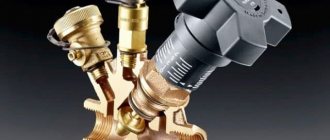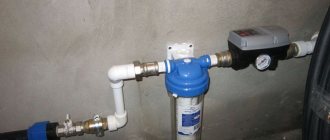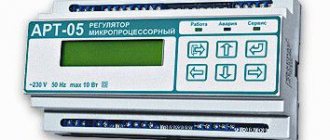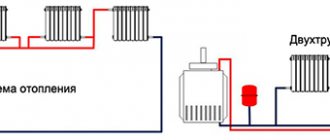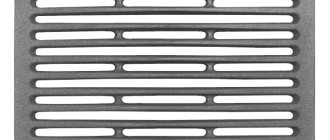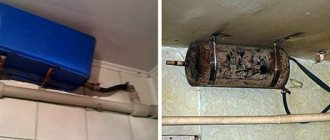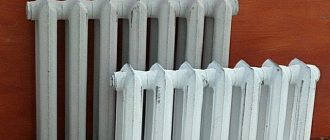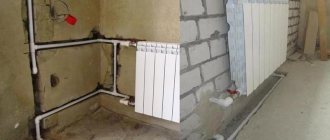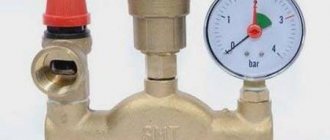On which radiators should gas vents be installed?
Installation on aluminum batteries is required. When aluminum comes into contact with the coolant, water decomposes into components, one of which is hydrogen. Therefore, it is necessary to vent gases in such heating devices.
Installation on partially bimetallic radiators is also desirable. In them, the contact area of aluminum with the coolant is greatly reduced, but is still present. That is why the installation of the Mayevsky crane is desirable.
This is a straight and angular automatic air vent. They can also be placed on radiators, only the “pimply” should look up
Fully bimetallic radiators are safer in this regard: their entire core is made of steel. But many manufacturers require such a device in their installation recommendations.
These devices are ineffective on cast iron radiators of older shapes. In them, air removal is only possible together with a sufficiently large amount of coolant. But these devices (both manual and automatic) are not suitable for this. In this case, standard or ball valves are installed to bleed air.
With tubular radiators and registers, the situation is approximately the same as for cast iron: only taps work effectively. Therefore, there is no point in installing air vents on them.
This is a needle air vent valve, or a Mayevsky valve.
Installation of Mayevsky taps on steel panel radiators is mandatory. The fact is that the passages for coolant circulation have a small diameter. And if an air lock forms, the movement of the coolant will be blocked. It will completely or partially stop heating. The plug can be removed only by draining most of the coolant and filling it again. Therefore, most often panel radiators come straight from the factory with air bleed valves.
Types of air valves
Air bubbles contained in the coolant tend to accumulate in certain places in the heating network and inside radiators. The resulting bubble continues to be fed with new portions of oxygen and develops into an air plug, blocking the movement of heated water in this area. As a result, nearby batteries or radiator sections cool down.
To bleed air from the heating system, 2 types of valves are used:
- Mayevsky manual crane;
- automatic air vent of float type.
Historical reference. During Soviet times, such air separators were not used. In private houses, open-type circuits were used, where the air escaped through an expansion tank. Centralized heating networks of apartment buildings were equipped with air collectors and drain valves installed at the highest points, and sometimes in radiators.
How does a drain valve work?
The design of the Mayevsky valve shown in the drawing is not difficult to understand. At the end of the brass body with an external threaded connection ½” (DN 15) or ¾” (DN 20), a hole Ø2 mm is made, the cross-section of which covers a screw with a conical tip. There is a small diameter hole made in the side of the body, designed to release air.
Sectional drawing of a Mayevsky screw crane
Note. The modernized air outlet valve is equipped with a rotating plastic insert, inside of which there is an outlet channel. Convenience is that the position of the discharge hole can be adjusted by turning the plastic washer.
The mechanical “air vent” works as follows:
- In heating operation mode, the shut-off screw is tightened and the cone seals the hole.
- When you need to release the air lock, the screw is unscrewed 1-2 turns. Under coolant pressure, air passes through a hole with a diameter of 2 mm, enters the outlet channel and moves outward along it.
- First, clean air escapes from the hole, then mixed with water. The screw is tightened after a dense stream of coolant flows out of the channel.
Varieties of valves according to the method of unscrewing
The Mayevsky air valve with a manual drive is a trouble-free means for releasing gases from pipelines and heating radiators. The secret of reliability is the absence of moving parts that can become clogged, worn out or rusted. As a rule, the valve is used as a radiator air vent.
Manual heating air valves are divided into types according to the method of unscrewing the screw:
- using a plastic or metal handle;
- the traditional option is a slot for a flat-head screwdriver;
- square head screw to use a special wrench.
What a Mayevsky faucet is and how it functions is clearly shown in the video from a master plumber:
Operating principle of automatic air vent
It is easy to guess that this type of air release valve operates without human intervention. The element is a vertical barrel made of brass with a threaded connection G ½ “(DN 15), where a plastic float is placed. The latter is connected by a lever to a spring-loaded air release valve mounted in the lid.
For reference. Automated air vents (in common parlance - auto vents, vents or vents) are produced with two types of external connecting threads - ½" and 3/8". But in the post-Soviet space, products with half-inch threads are usually used; 3/8 is extremely rare.
The operating principle of the automatic air vent is as follows:
- In operating mode, the chamber inside the housing is filled with water, pressing the float upward. The spring loaded air valve is closed.
- As air accumulates in the upper zone of the chamber, the coolant level decreases and the float begins to descend.
- When the level drops to a critical value, the weight of the float overcomes the elasticity of the spring and the valve opens, bleeding air outward.
- Due to excess pressure in the heating system, water will displace all the air from the chamber of the device, take its place and raise the float again. The valve will close.
When the pipeline network is filled with coolant, air removal occurs continuously while the float lies at the bottom of the tank. As soon as water fills the chamber, the spring will close the valve and bleeding will stop. Please note that part of the air mixture will remain inside the housing under the lid itself, which will not affect the normal operation of the heating.
According to their design, automatic air vents come with straight and angular connections. Some manufacturers discharge the discharge vertically upward, others - to the side, from the side “spout” with a jet. From the point of view of the average homeowner, these differences do not matter much, but they will tell a master plumber a lot.
Example. Practice shows that an automatic valve with a side outlet works more reliably than with a vertical outlet. Conversely, a product with an angled fitting collects air bubbles worse than a design with a bottom direct connection.
The design of automatic air vents is constantly being improved. Leading manufacturers of heating system parts provide their products with additional functions:
- Protection against water hammer using a reflective plate (placed at the entrance to the chamber).
- Effective capture of small bubbles is achieved in a flow-through design with two horizontal fittings for connection to the network. The lower zone of the increased volume of the tank is occupied by a special filler, which stops moving air bubbles and collects them in the chamber.
Once you unscrew the element from the adapter, the spring will close the passage with a plate - Possibility to remove the air vent for maintenance purposes without emptying the pipes. This is achieved by installing an automatic shut-off valve with a spring on the inlet fitting. When the plumber unscrews the element, the spring straightens and the washer with the O-ring seals the passage, as shown in the diagram above.
- Embedding a mini-valve into the radiator plug (see photo).
Air valves designed as radiator plugs
Lyrical digression. Homeowners and some “specialists” unknowingly call the float air vent an automatic Mayevsky valve, which is fundamentally wrong. In the 30s of the last century, the inventor Mayevsky proposed the design of a manual crane, but it has nothing to do with the “automatic machine”.
Types and technical characteristics
Depending on the method of removal, these devices are of two types:
- manual;
- automatic.
They are made with different diameters. The most common are 1/2” and 3/4” (half an inch and three quarters of an inch). In nature, there are also 1/8”, 1/4” and 3/8”, but they are not used in our systems. The modification most often used is a half-inch diameter 1/2”; in another system of units it is also called DU 15. In this case, the number 15 is the designation of the connection size in millimeters.
Manual and automatic device for removing gases from the heating system
In addition to diameters, the following parameters are also important:
- Operating pressure. In most models it is 10 atm, there are devices designed to operate at 16 atm.
- Type of work environment. There are air valves, and there are those that handle liquids. Heating systems use working liquids or universal ones (both air and liquid).
- Temperature of the working environment. More often found with an operating temperature of 100 oC - 110 oC. There are ones that work up to 150 oC.
- Thread type: external or internal.
These technical characteristics of air vents must be selected for the existing type of system. For individual heating systems, any will be suitable, but when selecting devices for radiators powered from centralized systems, you need to know both the pressure and the temperature specifically for your home (find out at the housing department, housing department, housing office, etc.).
Reasons why air enters the system
Most often, air locks appear in the heating system after a long period of inactivity, repair or replacement of any parts. Also, due to too rapid filling of the network with coolant, air bubbles form, so it must be filled slowly. After the initial filling of liquid, air pockets always appear in the system. Since dissolved oxygen is present in the water, when heated, it begins to evaporate and rise to the highest places, slowing down the circulation of the coolant.
air in the battery
In addition to noise and poor heating of radiators, the air in the heating system contributes to corrosion of pipes and pressure surges in the network. It is especially dangerous for wet-type circulation pumps, since during operation their sliding rings require constant lubrication with coolant.
In order for the entire network to last as long as possible, all radiators, boilers, collectors and other places where the passage of air is difficult should be equipped with air vents. If, after releasing the gases, the system still does not warm up properly, it is recommended to drain all the coolant to flush the pipes, since the cause of poor circulation may be excessive contamination.
Operating principle of automatic air vent
The designs of these devices may change, but the principle of operation remains the same. The device is a hollow cylinder, which consists of two parts - upper and lower. They are connected to each other using a thread, the tightness is ensured by a rubber (silicone) sealing ring. At the top there is a small hollow cylindrical protrusion. Air leaves the system through this protrusion. It has a thread onto which a plastic (polypropylene) cap is screwed. With this cap, you can stop bleeding air if desired (tighten it).
One of the devices is simple and effective
The operation of the automatic air valve is based on the buoyancy of a float placed inside. The float is connected to a rod that acts on a spring-loaded spool that closes the outlet. If there is no air in the system, the air vent body is filled with coolant, the float has risen up. In this position, the rod supports the spool, and air does not come out (or come in). When air appears in the system, the coolant is gradually displaced and the float moves down. The rod does not press as hard on the spool, and the spring opens the outlet hole. The accumulated gas escapes, coolant is again drawn into the housing, and the valve closes.
One of the models with a more complex spring-loaded air release mechanism
In devices from different companies, the mechanism for influencing the spool may be different, but the principle remains the same: the float is down, the valve is closed, when it rises, it is open. The operating principle of one of the modifications is demonstrated in the video.
Air vents: the main task
A device for releasing air from the heating system makes it possible to remove gases accumulated in the pipeline and radiators.
Airing of the system occurs for a number of reasons, including
:
- Due to the high content of dissolved gases in the coolant, which has not undergone special preparation - deaeration. The solubility of gases depends on the temperature of the medium, and when the coolant is heated, air separates from the water and accumulates, forming plugs.
- Due to the excessively rapid filling of the circuit with coolant, the liquid in the branched network does not have time to naturally displace the air. The coolant must be poured from the bottom point so that the air is displaced to the top and escapes through the open valve.
- Due to the penetration of air through the walls of a polymer pipeline, if it is made of a material without a special anti-diffusion coating. When choosing pipes, this point should be taken into account.
- During repair work involving the replacement of elements without completely draining the coolant, in this case the heating device or circuit being repaired is cut off from the rest of the system and then connected back.
- In case of loss of tightness.
- As a result of corrosion processes, when oxygen interacts with iron, hydrogen is released from an air molecule, which also accumulates in the system.
Why is the air in the heating system dangerous?
Air dissolved in the coolant gradually damages steel pipes and radiators and elements of the boiler unit. The corrosive activity of air, which was first dissolved in water and then released during heating, significantly exceeds that of atmospheric air due to the increased oxygen content.
Installation locations of air separators in the system
Gases accumulated in the pipeline not only provoke or accelerate corrosion of metal elements, but also form air pockets that prevent the heating system from functioning fully.
:
- Due to gas locks, the circulation of the coolant deteriorates; in serious cases, the movement of liquid through the pipes can be completely blocked. In such a situation, heating devices quickly cool down.
- Air pockets act as a heat insulator, and if gases have accumulated in the upper part of the battery, it warms up worse and transfers less thermal energy to the room.
- If there are air pockets, the movement of the coolant along the heating circuit is accompanied by loud gurgling sounds and murmurs, which disrupts the acoustic comfort in the house.
- Circulation pumps are not designed for pumping gases; when working with air-filled coolant, the bearing and impeller of the pump unit wear out much faster.
Special air exhaust devices help solve problems associated with airing the heating system
It is important to choose the right valves for bleeding air and correctly determine the location of these elements
Types of automatic air vents and their installation
These valves can be straight or angled, and there are special models for radiators. Specialized or angular modifications are often installed on batteries. They are screwed into the radiator manifold (if the diameter allows) or installed through an adapter.
Regardless of the type, the device must be installed so that the outlet (cap) is directed upward. There are two installation methods:
- screw directly into a thread of the appropriate size;
- First install the shut-off valve, and then screw the air vent into it.
A shut-off valve is a small device. But it makes it possible to remove the air vent while the system is running
The shut-off valve has a spring-loaded gasket inside, which, when released, shuts off the coolant. When installing the air vent, the valve is pushed down, allowing access to the system. It is very desirable to install this simple device in centralized heating systems. It allows you to remove air vents without stopping and draining the system. You will have to remove them for cleaning. In general systems, the coolant contains many impurities that settle and clog the spool and the mechanism supporting it. If a lot of dirt accumulates, coolant begins to flow through the outlet hole. This means it's time to disassemble it and clean it. This is where the shut-off valve comes in handy. With it, you simply unscrew the air vent device, the spring is released and the hole is sealed with a gasket.
When installing an automatic air vent there are several rules:
- Use a regular wrench. An adjustable wrench cannot be used: it is difficult to control the applied force.
- Hold the hexagon located under the cylinder. You can’t hold on to the body: it can break.
Another type of automatic air vent valve
A little about prices. It has a significant variation and depends on the manufacturer, connection diameter (half-inch ones are about 10-15% more expensive), as well as on the material used. The cheapest models cost about $5, the most expensive - $15. But in different stores prices for the same models can vary greatly. For example, you can buy a Danfoss DU 15 automatic air vent for both $7.63 and $11.5. But, of course, you need to look carefully so as not to buy a fake. This is especially dangerous with well-known companies: Danfoss (Danfos), Wind (Wind) or Valtec (Valtek).
We also list prices for shut-off valves. There is also a spread, but not so significant: from $1.1 to $1.8.
Purpose and types of air vents
Autonomous heat supply systems, as well as heating devices connected to the main network, are equipped with specialized air vent valves. The most common among them are the Mayevsky manual valve and the automatic air valve.
There are 3 types of air valves sold in the retail chain:
- Traditional straight type, with vertical installation.
- Angular 90 degrees. They are used on heating appliances as an alternative to the Mayevsky tap, when the design of the heating pipework does not allow direct modification.
- Specialized air vents for heating devices.
Corner and radiator air vents
In various heating systems, sometimes a situation arises when it is necessary to vent air in inaccessible or remote areas. Where it is not possible to install a traditional type of air valve for heating, therefore a corner structure is installed. The angle valve has a special lower pipe with a rotation angle of 90 C and is capable of connecting to a horizontal section.
It should be noted that the corner design with an external threaded connection is practically no different from a conventional vent and can be used instead, if necessary.
Where to install air vents correctly
In various heat supply schemes there are areas where the installation of air vents is mandatory. In a professionally executed version of the heating network, installation locations are indicated according to the heating network design. There are general approaches to the placement of such protective devices. For example, Mayevsky taps are attached to all heating devices to release accumulated air. Insertion point - in the upper corner plug, remote from the point of connection of the supply pipe to the heating device, air collects in this area. When the boiler unit is equipped with a built-in air vent, it is not installed on the supply pipe.
An automatic air vent for heating must be installed vertically in the following places in the heating network:
- Safety unit for a boiler operating in a closed heating network.
- On the supply and return manifolds of the “warm floor” system.
- If in the intra-house wiring of the heating network, the highest point is a pipeline, and not a battery, then a float vent is mounted in it.
- Installation of an expander and an indirect heating boiler into the tank is carried out when this is provided for in the design scheme.
- On a hydraulic arrow, to separate the heating circuits in the house.
In addition to the noted zones, air vents are installed in problematic areas of the heating network, where, due to the difficult circumstances of installing pipes of different diameters, P-compensators of the upper direction are formed. In particular, when pipes go around doors or a flight of stairs, and then go down again. In such devices, air accumulates in 100% of cases, for this reason, in such places an air vent is needed, preferably an automatic one.
In intra-house heating circuits of multi-storey buildings, air vents are installed:
- At all collector sites
- On vertical P-compensators.
- At the highest point of the network of each riser of a multi-story building.
Manual way to remove air from batteries
And yet, more often manual models are installed on radiators. And the most common of them is the Mayevsky crane. It is small, simple and effective. It is also called a needle air vent valve.
It is a metal washer with a thread applied around the circumference. The washer has a through cone-shaped hole with threads. The hole diameter is very small. On one side 1-1.5 mm (towards the radiator) and about 5 mm on the other.
Diagram of the Mayevsky crane
A locking cylinder is screwed into the hole, which is also threaded. When closed, it blocks the coolant flow completely. The cylinder is unscrewed, the cone is lifted, the hole opens. If gases have accumulated in the radiator, they come out. If there are no gases, the coolant comes out. But there cannot be a lot of it: not much will leak into a hole with a diameter of 1 mm.
In some models, a plastic disk with a drain hole (also about 1 mm in diameter) is attached to the body. This disk turns freely around a horizontal axis, which allows you to set the drain hole in a convenient position.
Ways to combat system airiness
To remove air accumulated in heating pipes, special devices are used - air vents. They must be installed on each radiator. including steel, at the outlet of heating devices or at the highest points of the circuit, where released oxygen is concentrated.
You can find various modifications of such fittings on the market; the most common are devices made in Italy and Germany. With the same purpose, two fundamentally different types are distinguished.
Handheld devices
Mayevsky valves, or manual air vents, are used to discharge accumulated air in the circuit. They have a fairly simple design and consist of a screw that covers a needle-shaped hole in a brass body.
All parts of the device fit tightly and when closed do not allow coolant to pass through. Gases are released through a hole located in the side of the housing. Recently, fittings with metric threads have become more popular, which greatly simplifies their production. In various designs, adjustment can be made in several ways:
- unscrew with a screwdriver;
- open using a special square ICMA key;
- turn away with your hands.
Most often, manual taps are installed on radiators, screwed into the top hole. Such fittings are selected depending on the diameter.
Often these devices are installed on other devices. They are attached to heated towel rails using a tee. In two-story houses with top supply, all appliances located on the top floor must be equipped with Mayevsky taps.
After filling the system or before the heating season, it is necessary to bleed off the accumulated air. To do this, turn the hand tap counterclockwise and the oxygen leaves the device. Usually one turn is enough, but if a large volume of gases has accumulated, you can tighten the valve another half turn. It needs to be shut off when water begins to come out instead of gases. In systems with forced circulation, the pump is first turned off, and after a few minutes the accumulated gases are released. When the pump is running, it is impossible to collect all the air at the location where the valve is attached and the plug will not be removed.
Sometimes there are manual air vents not with a needle rod, but with a metal ball that blocks the hole for releasing oxygen. The design of the body may also differ, allowing installation of the crane both straight and at an angle.
Automatic valve
The operation of air vents, which operate automatically, is based on the float-valve principle. A float is installed in the brass body, connected by means of a lever to the outlet valve. The float constantly floats in the water, while the valve is closed. If air accumulates, the float lowers and opens the valve. The gas escapes into the atmosphere through a narrow opening between the float and the body.
Then the reverse process occurs. As air escapes, the housing is filled with coolant and the float rises, closing the valve. If the air vent breaks down, there is no leakage of liquid due to the presence of locking caps in the design. An automatic air vent is installed in the system through a special shut-off valve, which closes when the device is removed. This allows repair work to be carried out without draining water or releasing pressure.
https://youtube.com/watch?v=8PSjHc4kPcI
Such devices are installed at the highest points of the system and are located vertically. Most often they are installed in such critical places:
- on a heating boiler;
- at the top point of the riser;
- on collectors;
- on air separators.
Wider use is hampered by the low quality of process water. Small particles floating in the liquid clog the air vent and the equipment stops working. A fundamental change has been made to the design of AFRISO fittings:
- increased hole size;
- the outlet channel is located in the middle of the float.
This design allows the air vent to work more efficiently and regardless of the quality of the coolant, and its maintenance and cleaning have also been greatly simplified.
How to use the Mayevsky crane
If you have air collected in your heating radiator, you need to take a special wrench (a small piece of plastic that comes with each kit) or a regular screwdriver. Insert it into the slot on the air vent disc and turn it one or two turns counterclockwise. At the same time, a hissing sound will be heard - air begins to escape through a small hole next to the disk. Gradually, water begins to come out along with the air (the stream is very thin, don’t be alarmed). When the stream becomes continuous, close the tap by turning the key (screwdriver) in the opposite direction.
This procedure is usually needed when starting up the system, and from time to time throughout the year. After the end of the heating season, you also need to check for the presence of gases - it is forbidden to drain the coolant, since “dry” the inner surface of the radiator very quickly corrodes. And since the coolant remains in the radiator, reactions continue to occur. What you can do to remember to bleed the air is to turn the tap a little after turning off the batteries. Then there will be a small hole through which, without pressure, water (coolant) will not flow, and the gases will gradually escape.
Practical recommendation
It is advisable to bleed the system regularly, and not only when the efficiency of heating radiators decreases. Excess air in the circuit has a number of negative consequences.
- The risk of powerful water hammer increases. And this is a direct path to a leak in any part of the heating circuit; there will always be a weak point (poor connection, metal fatigue, natural wear and tear of materials).
- Reduced service life, or even breakdown of the pump. The entry of air into the device leads to so-called “dry friction”. As a result of overheating of metal parts (rings, bearings, shaft), they become deformed, split, and the pumping device stops functioning. The consequences are known: the boiler will shut down when there is an emergency signal.
- Unstable operation of the heating installation. The presence of air, which can move along with water, forces the automation to constantly change the operating mode of the burner: the service life of the equipment is reduced and fuel consumption increases.
- Unscheduled heating system repairs. Oxygen contained in the air initiates chemical reactions upon contact with metals. As a result, a corrosion process begins on the inner walls of batteries and pipes.
Advice from a professional. Practice confirms that one of the main reasons for radiator gas contamination is their poor quality. The wrong choice of heating devices leads to the fact that you will have to bleed air from them often. And this is far from the only disadvantage of such savings. To mitigate possible risks, you need to buy heating batteries from sellers with an impeccable reputation, and be sure to check the certificate of conformity.
In the online store alfatep.ru you will find a large assortment of radiators of all types of well-known brands at manufacturer prices. Heating appliances are already equipped with everything necessary for bleeding air. You can also buy Mayevsky taps and automatic air vents at retail – the choice is impressive. By calling 8 (495) 109 00 95 or in the “Contacts” section (via the feedback option), everyone will receive professional advice on methods for deaerating batteries and circuits, regardless of the heating scheme. Service specialists provide project development, equipment installation and heating system maintenance (repair) services to residents of the Moscow region.
Another option for a manual air vent
This valve is produced by the same companies that make automatic valves. There is also a cone here, but the design of the device is somewhat different. In addition there is a handle. It is, of course, more convenient to use than a key. The principle of operation is similar: turn in one direction, the cone moves away from the hole, the air comes out. Turned it in the opposite direction and closed the hole.
This is another manual air vent. There is also a shut-off cone here, but of a slightly different shape
A little about prices. The price of the Mayevsky faucet is $1.2-1.5, manual valves of other types start from $2. It’s hard to say how much the most expensive one might cost, but there are “antique” models that offer to buy for $20.
How to install manual models
The Mayevsky tap is screwed into the adapter. Usually there are no problems with selecting diameters, since this device comes in a mounting kit for radiators. Only during assembly you need to remember that if you install it on the radiator on the left, you must first screw the air vent into the adapter and tighten the threads (with a regular wrench, without using excessive force). After this, you can screw the assembly into the manifold. The whole installation.
Another version of the manual device is no more difficult to install. The process is the same as when installing an automatic one. In this case, it is also desirable to install it in tandem with a shut-off valve (the Mayevsky valve cannot be removed without stopping the system). If you are installing with a valve, screw the valve into the adapter from the installation kit. Then install this assembly on the radiator. And then you can screw the air vent into the installed valve.
Sometimes, to ensure tightness, winding is screwed onto the thread. You just don’t need to wrap it around a lot, and you can’t use paint. It is better to take a little sealant (you can only use sealant).
How the Mayevsky crane is installed is demonstrated in the video.
